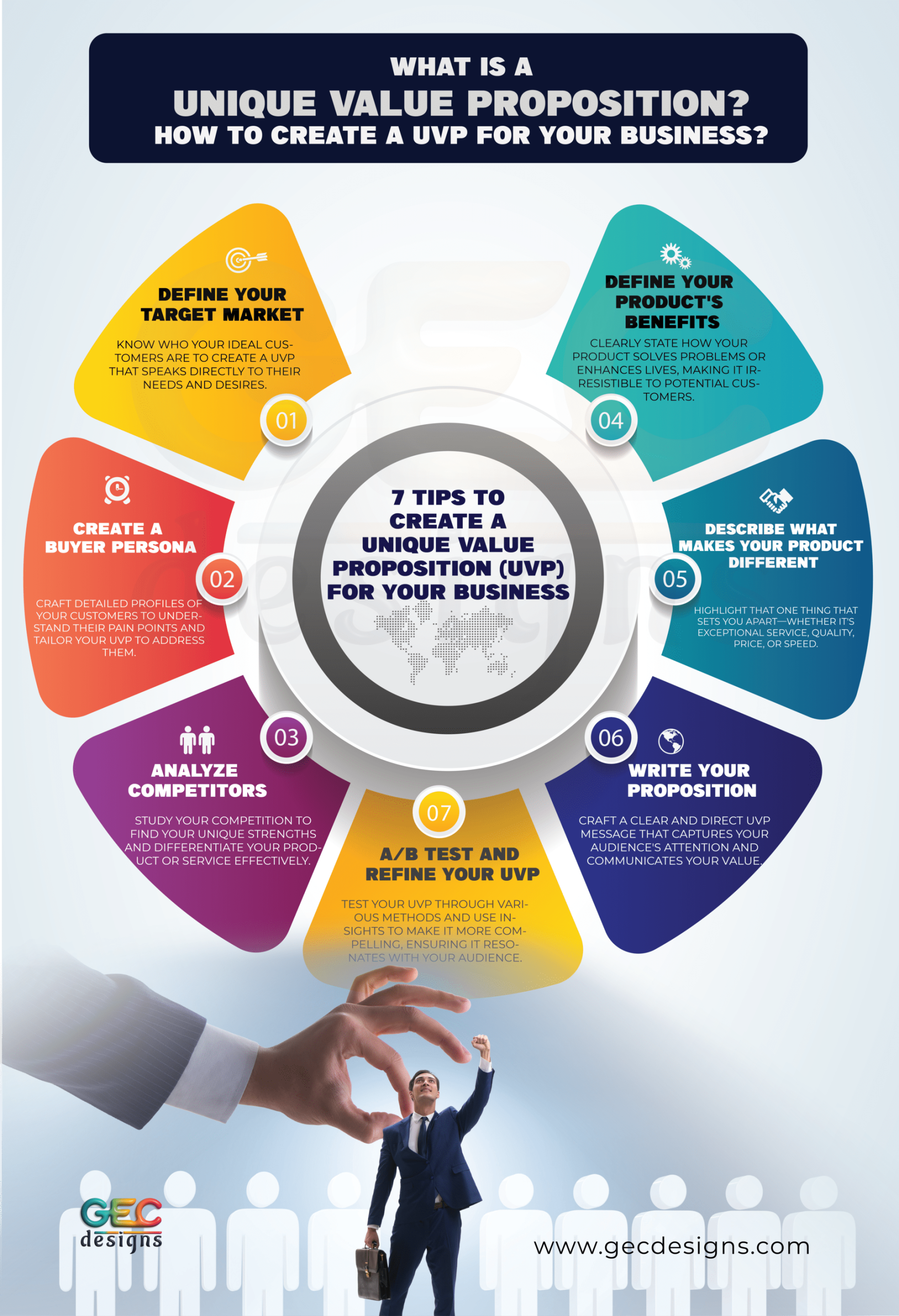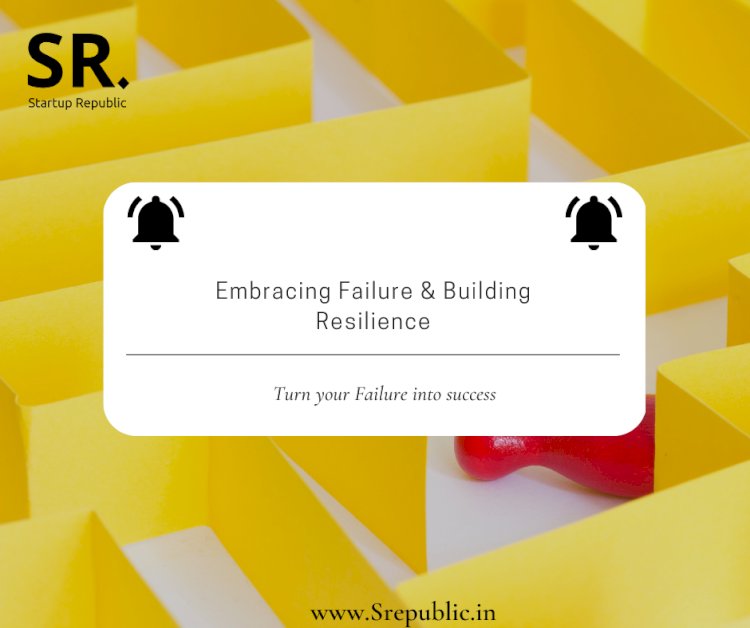
Developing a Compelling Value Proposition for Your Business: Your Ultimate Guide
In the bustling marketplace of today, where consumers are bombarded with choices, how do you make your business stand out? How do you convince a potential customer that your product or service is not just good, but exactly what they need?
The answer lies in mastering one of the most critical elements of business strategy: developing a compelling value proposition.
Think of your value proposition as the secret sauce of your business, the core message that answers the ultimate question in every customer’s mind: "Why should I buy from you instead of anyone else?"
If you’re a small business owner, an aspiring entrepreneur, or just someone looking to clarify their business’s unique offering, this comprehensive guide is for you. We’ll break down what a value proposition is, why it’s indispensable, and a step-by-step process to craft one that truly resonates with your target audience.
What Exactly Is a Value Proposition? (Simplified for Beginners)
Let’s start with a simple definition:
A value proposition is a clear, concise statement that explains:
- What problem your business solves for your customers.
- What benefits customers can expect from using your product or service.
- Why your offering is better or different from the competition.
It’s not a slogan, a tagline, or a mission statement (though it influences all of them). It’s the promise of value you deliver to your specific audience. It’s the core reason why someone would choose you.
Imagine you have just 30 seconds (an "elevator pitch") to explain your business to a stranger. Your value proposition is the heart of that pitch.
Why Is a Compelling Value Proposition Crucial for Your Business?
You might be thinking, "Isn’t a good product enough?" While a good product is essential, a compelling value proposition acts as its megaphone, ensuring the right people hear about it and understand its true worth. Here’s why it’s non-negotiable for business success:
-
1. Crystal-Clear Customer Understanding:
It helps your potential customers immediately grasp what you offer and how it benefits them. No confusion, no guessing games.
-
2. Powerful Differentiation:
In a crowded market, a strong value proposition highlights what makes you unique. It sets you apart from competitors who might offer similar products or services.
-
3. Guides Marketing & Sales Efforts:
Your value proposition becomes the North Star for all your marketing messages, ad copy, website content, and sales pitches. It ensures consistency and focus, making your marketing much more effective.
-
4. Improves Conversion Rates:
When customers clearly understand the value you provide and how it solves their problems, they are far more likely to make a purchase, sign up, or engage with your business.
-
5. Fosters Internal Alignment:
It provides a shared understanding for your entire team – from product development to customer service – about the core value your business delivers. Everyone is on the same page.
-
6. Attracts the Right Customers:
By clearly stating who you help and how, you naturally attract customers who genuinely need and appreciate what you offer, leading to higher satisfaction and loyalty.
The Building Blocks of a Powerful Value Proposition
Before we dive into the step-by-step process, let’s understand the key components that make up a strong value proposition. Think of these as ingredients in a recipe:
- 1. Your Target Customer: Who exactly are you trying to help? (e.g., busy parents, small business owners, eco-conscious shoppers). The more specific, the better.
- 2. Their Core Problem/Need: What specific pain point, challenge, or unfulfilled desire does your target customer have? What are they struggling with?
- 3. Your Solution: How does your product or service directly address that problem or fulfill that need? What do you offer?
- 4. Key Benefits & Outcomes: What specific positive results or improvements will the customer experience after using your solution? (e.g., save time, save money, feel healthier, gain peace of mind).
- 5. Unique Differentiators: What makes your solution different or better than alternatives? Why should they choose you over a competitor? (e.g., faster, cheaper, higher quality, more personalized, eco-friendly).
- 6. Proof (Optional but Powerful): Can you offer any evidence to back up your claims? (e.g., testimonials, statistics, guarantees, awards).
Step-by-Step Guide: Developing Your Compelling Value Proposition
Now, let’s roll up our sleeves and start crafting your value proposition. Follow these steps methodically for the best results:
Step 1: Deeply Understand Your Target Customer
This is the foundation. You can’t offer value if you don’t know who you’re offering it to and what they truly care about.
- Create Buyer Personas: Develop detailed profiles of your ideal customers. Give them names, demographics (age, location, job), psychographics (interests, values, lifestyle), and digital habits.
- Research, Research, Research:
- Surveys & Interviews: Talk to existing customers or potential customers. Ask about their challenges, frustrations, daily routines, and what they wish they could do.
- Online Forums & Social Media: What questions are people asking? What problems are they complaining about in groups related to your industry?
- Competitor Analysis: Who are your competitors targeting? What are their customers saying (good and bad)?
- Google Analytics/Website Data: If you have an existing website, what content are people consuming? What are they searching for?
Ask yourself: What are their dreams, fears, daily struggles, and aspirations related to what you offer?
Step 2: Identify Their Core Problem(s)
Based on your customer research, pinpoint the most pressing problem or need that your business addresses. Be specific!
- Example 1 (Busy Parents):
- Vague Problem: "They don’t have enough time."
- Specific Problem: "They struggle to prepare healthy, home-cooked meals after a long workday, leading to reliance on unhealthy takeout."
- Example 2 (Small Business Owners):
- Vague Problem: "They need more customers."
- Specific Problem: "They lack the marketing expertise and budget to create effective online ad campaigns that deliver measurable ROI."
Tip: Focus on problems that are painful, frequent, and for which your customers are actively seeking solutions.
Step 3: Articulate Your Solution
Now, describe how your product or service directly solves the specific problem you identified. Be clear about what you do.
- Example 1 (Meal Kit Service): "We deliver pre-portioned ingredients and easy-to-follow recipes for healthy meals directly to your door."
- Example 2 (Digital Marketing Agency): "We design, manage, and optimize highly effective social media ad campaigns specifically for local small businesses."
Step 4: Highlight Your Unique Benefits & Features
This is where you explain why your solution is great and what makes it stand out.
-
Features vs. Benefits – A Crucial Distinction:
- Features are what your product is or has (e.g., "Our phone has a 12-megapixel camera.").
- Benefits are what the customer gets or experiences from that feature (e.g., "Capture stunning, professional-quality photos even in low light.").
- Always focus on benefits! Customers buy benefits, not just features.
-
Brainstorm Benefits: For each feature of your product/service, ask "So what?" or "What does this mean for the customer?"
- Meal Kit Service:
- Feature: Pre-portioned ingredients.
- Benefit: No food waste, saves time on chopping, perfect portion sizes.
- Feature: Easy-to-follow recipes.
- Benefit: Anyone can cook, reduced stress, enjoyable cooking experience.
- Differentiator: Organic, locally sourced ingredients (unique selling point).
- Digital Marketing Agency:
- Feature: AI-powered ad optimization.
- Benefit: Maximizes your ad spend, higher conversion rates, more leads.
- Feature: Dedicated account manager.
- Benefit: Personalized strategy, expert guidance, peace of mind.
- Differentiator: Specializes only in local businesses (niche focus).
- Meal Kit Service:
Step 5: Prove It (If Possible)
Credibility is key. If you can, offer a reason for customers to believe your claims.
- Examples:
- "Trusted by over 10,000 busy families."
- "Customers report a 30% increase in leads within the first month."
- "Backed by our 30-day money-back guarantee."
- "Awarded ‘Best New Business’ by [Local Chamber of Commerce]."
- Include testimonials, case studies, or data if you have them.
Step 6: Craft Your Value Proposition Statement
Now, bring all the pieces together into one or a few concise sentences. There’s no single "right" formula, but here are some common structures:
Simple Template:
(Your Company/Product) helps (Target Customer) who (has a specific problem) by (offering your solution), resulting in (key benefits/outcomes). Unlike (competitors/alternatives), we (unique differentiator).
Let’s apply it with our examples:
-
Meal Kit Service Example:
- "[Your Meal Kit Service Name] helps busy parents who struggle to prepare healthy, home-cooked meals after a long workday by delivering pre-portioned, organic ingredients and easy-to-follow recipes directly to their door, resulting in stress-free weeknight dinners and more quality family time. Unlike generic meal kits, we prioritize locally sourced, seasonal produce and offer customizable meal plans."
-
Digital Marketing Agency Example:
- "[Your Agency Name] helps local small business owners who lack the expertise and budget to run effective online ad campaigns by designing, managing, and optimizing highly effective social media ads, resulting in more qualified leads and measurable growth without the guesswork. Unlike large, impersonal agencies, we offer personalized strategies and dedicated account managers focused solely on local market success."
Key considerations for your statement:
- Clear & Concise: Get straight to the point.
- Customer-Centric: Focus on the customer’s needs and benefits, not just your features.
- Specific: Avoid vague language.
- Credible: Can you deliver on this promise?
- Unique: Does it clearly set you apart?
Step 7: Test and Refine
Your value proposition isn’t set in stone. It’s a living statement that can evolve as your business grows and market conditions change.
- Get Feedback: Share your value proposition with potential customers, existing customers, and even people unfamiliar with your business. Ask:
- "Do you understand what we do?"
- "Does this sound appealing?"
- "Would this solve a problem for you?"
- "What makes us different, based on this statement?"
- A/B Test: If you have an online presence, test different versions of your value proposition on your website, landing pages, or ads to see which resonates most with your audience (e.g., which one leads to more sign-ups or purchases).
- Monitor & Adjust: Keep an eye on market trends, competitor offerings, and customer feedback. Be prepared to tweak and improve your value proposition over time.
Common Mistakes to Avoid When Developing Your Value Proposition
As you craft your value proposition, watch out for these pitfalls:
- Being Too Vague: "We offer great service!" is not a value proposition. What kind of service? To whom? What’s the benefit?
- Focusing Only on Features: Listing features without explaining the customer benefit is a common mistake. Remember: "So what?"
- Not Being Unique: If your value proposition could apply to any of your competitors, it’s not strong enough.
- Trying to Please Everyone: A strong value proposition targets a specific audience with specific needs. Trying to appeal to everyone usually means appealing to no one effectively.
- Making Unsubstantiated Claims: Don’t promise what you can’t deliver. Authenticity builds trust.
- Using Jargon: Speak in plain language that your target audience understands, not industry buzzwords.
Where to Use Your Compelling Value Proposition
Once you’ve nailed your value proposition, integrate it everywhere your customers interact with your business:
- Your Website Homepage: This is often the first thing visitors see.
- Product/Service Pages: Explain the value for each specific offering.
- Marketing Materials: Ads, social media posts, brochures, email campaigns.
- Sales Pitches & Presentations: The core of your pitch.
- Employee Onboarding & Training: Ensure everyone in your company understands and can articulate your core value.
- Business Cards & Signage: A concise version can be powerful.
Conclusion: Your Business’s North Star
Developing a compelling value proposition isn’t just a marketing exercise; it’s a fundamental strategic process that forces you to truly understand your customer, your offering, and your place in the market. It provides clarity, focus, and a powerful message that can propel your business forward.
It’s the ultimate answer to "Why us?" and when you can articulate that answer clearly and persuasively, you unlock the potential for remarkable business growth and customer loyalty.
Don’t let your business be just another option. Craft a value proposition that makes you the only choice. Start today!



Post Comment